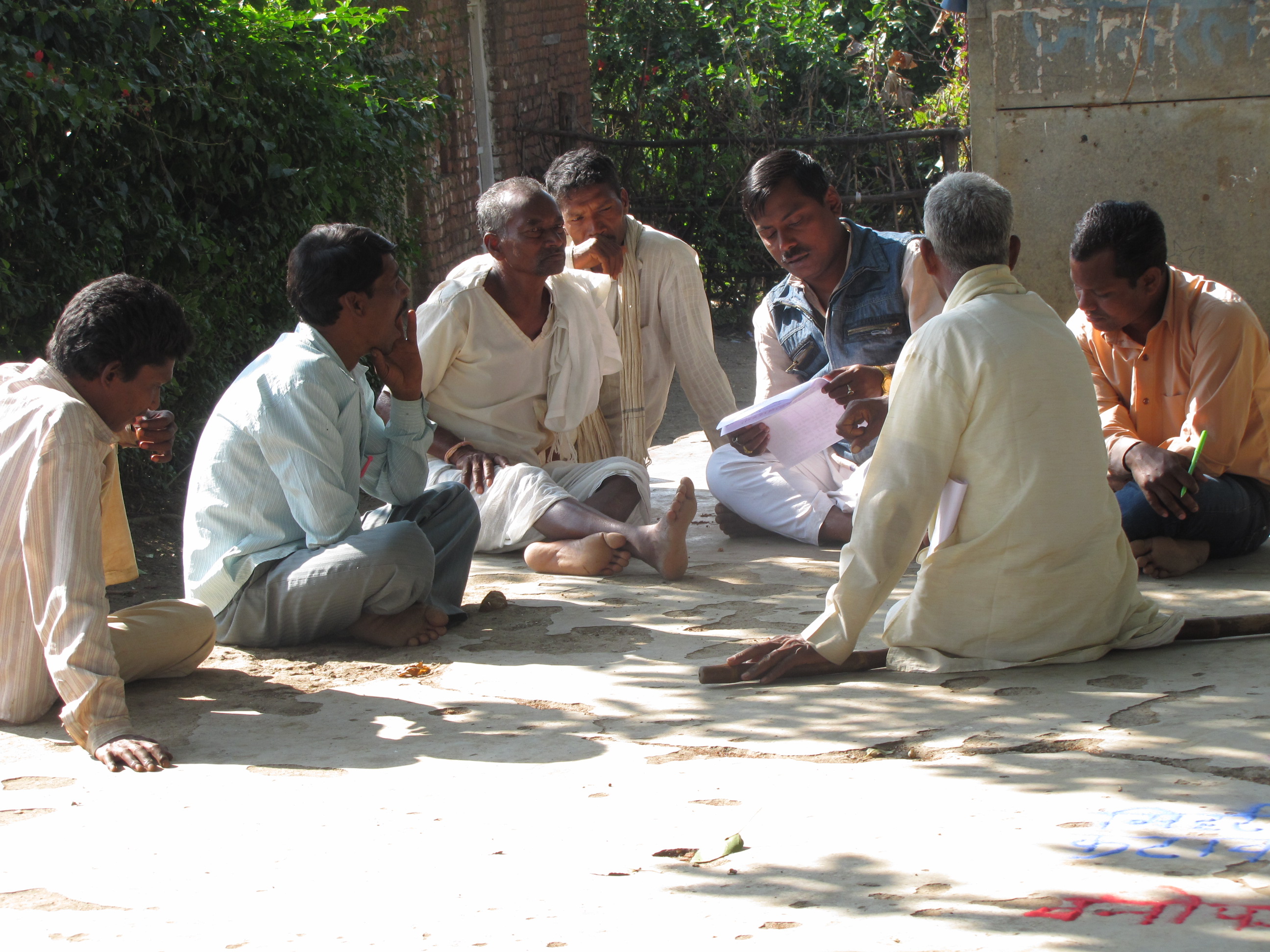

Le mécanisme institutionnel au niveau du village est essentiel pour la protection des zones conservées par les communautés indigènes. Un aspect essentiel des interventions de la FES dans les villages de Mandla a été la constitution de comités de gestion des ressources naturelles ou Prakratik Sansadhan Prabandhan Samitis (PSPS). Les samitis étaient élus par les Gram Sabhas (réunions d'adultes) et avaient une composition universelle garantissant que chaque résident du village, malgré son statut social ou économique, avait son mot à dire dans le fonctionnement du Samiti. L'une des tâches du comité consiste à conseiller le Gram Sabha sur la gestion des ressources naturelles et à diriger le processus d'élaboration de règles et de règlements concernant les biens communs, ainsi qu'à planifier les ressources naturelles et l'utilisation des terres.
Le PSPS a reçu une formation sur la gouvernance décentralisée, l'élaboration de perspectives sur les biens communs et la planification. Les institutions villageoises sont parvenues à un ensemble de règles sur l'utilisation des ressources naturelles. Ces règles comprennent principalement des règles de délimitation, des règles de protection des forêts et des règles d'utilisation dans une certaine mesure. L'accent a été mis sur le contrôle de l'abattage et de la coupe des arbres. Dans certains endroits, elles ont également établi des règles concernant le partage des poissons produits dans les étangs du village, etc. pour les forêts et les règles d'utilisation dans une certaine mesure.
Le Panchayati Raj Act, le Panchayat Extension to Scheduled Areas, le Joint Forest Management et le National Biodiversity Act fournissent un cadre juridique. Le Gram Sabha (réunion de tous les adultes de la zone du Panchayat) fournit également un cadre favorable aux institutions de conservation au niveau du village.
Les questions de conservation et de gouvernance des ressources ont été discutées avec les hommes et les femmes séparément, ce qui a permis de comprendre la dégradation des ressources naturelles au sein du PSPS, puis du Gram Sabha.
Les institutions villageoises renforcées gèrent et conservent activement plus de 500 hectares de forêt dans la région du projet en supervisant l'utilisation durable des ressources naturelles. Une comparaison avec une forêt qui n'est pas gérée par une communauté indique qu'une forêt gérée par une communauté présente une régénération supérieure de 60 %, une densité végétale supérieure de 37 % et un nombre d'espèces végétales supérieur de 40 %.
Le renforcement des institutions villageoises permet d'articuler les priorités du village et de garantir l'intégration de la gestion et de la conservation des ressources. Des institutions villageoises fortes sont capables de planifier le paysage, d'aborder des questions telles que la fragmentation des forêts et de traiter l'ensemble des franges forestières comme une seule unité, quel que soit le régime de propriété. Une institution est donc une meilleure unité pour améliorer les capacités d'adaptation des communautés, car elle peut traiter le "problème" pour l'ensemble de la communauté et pas seulement pour une seule famille.